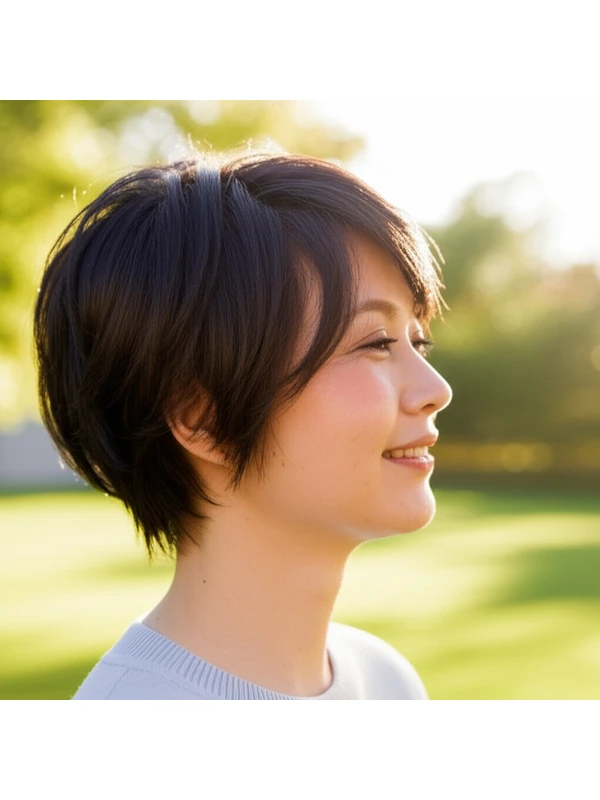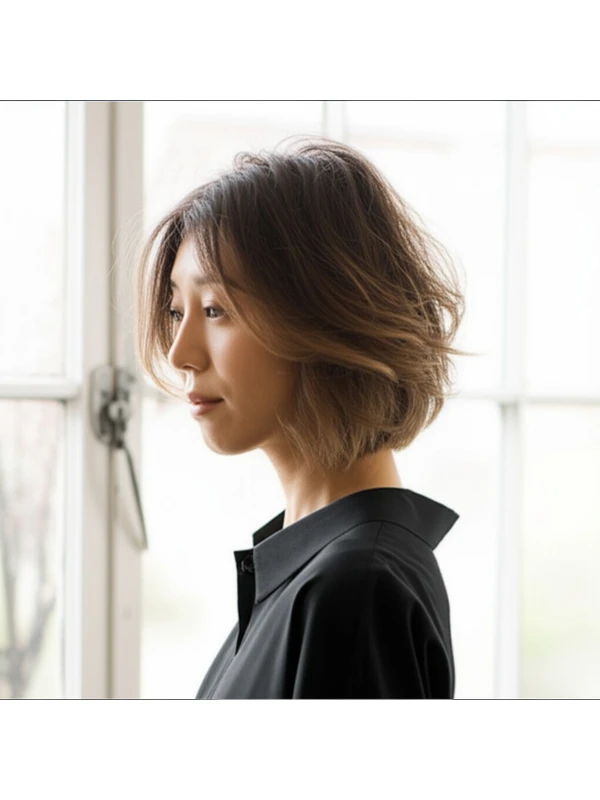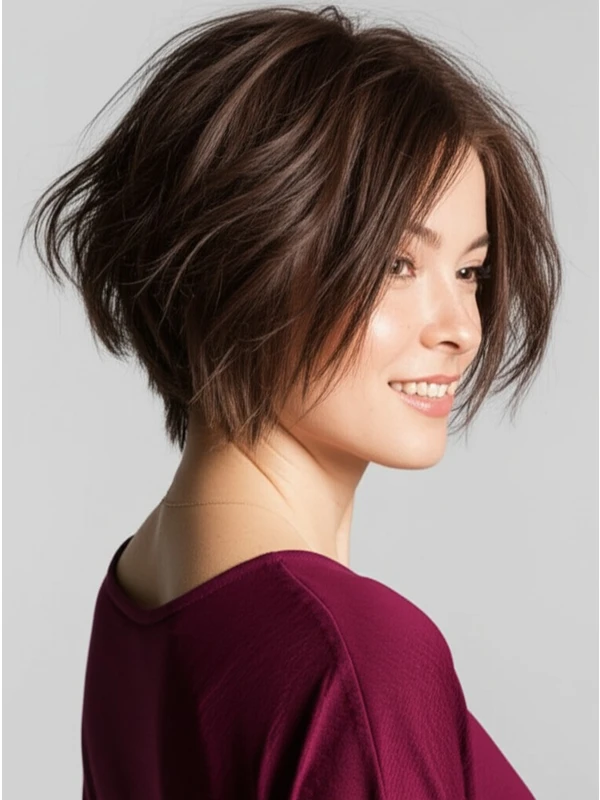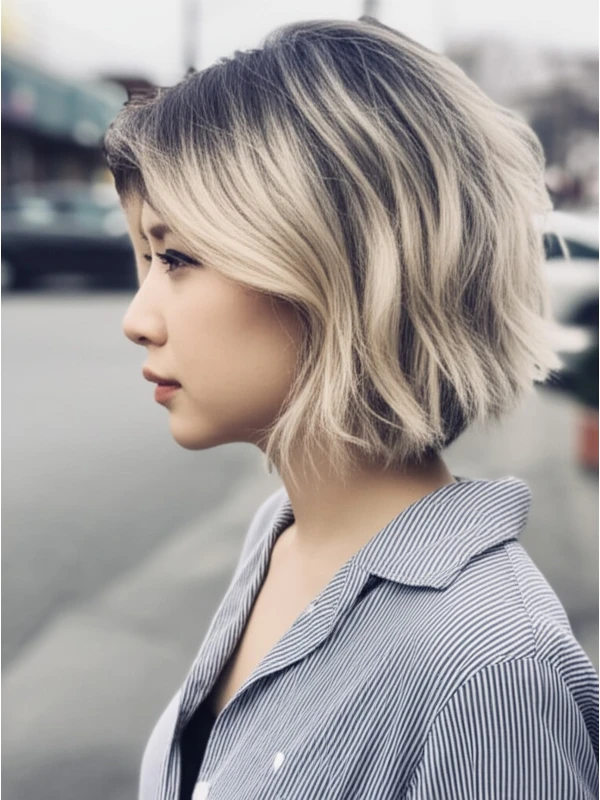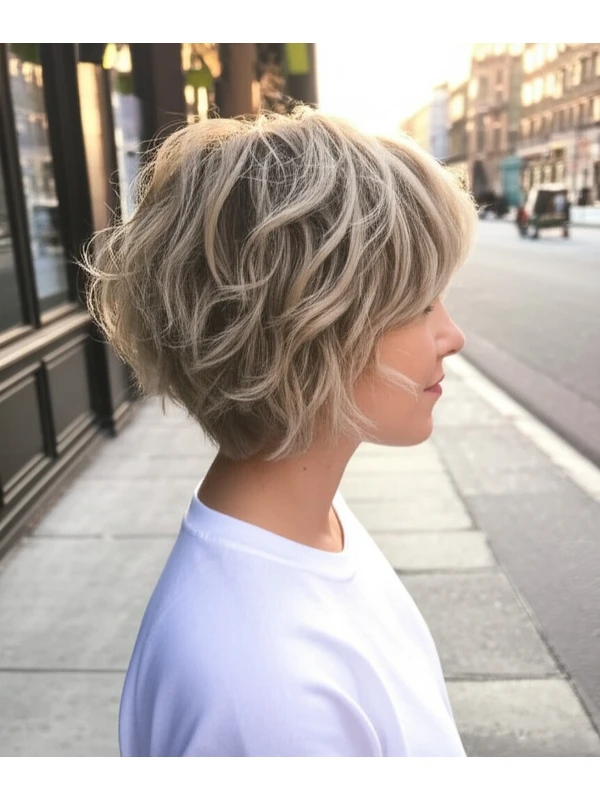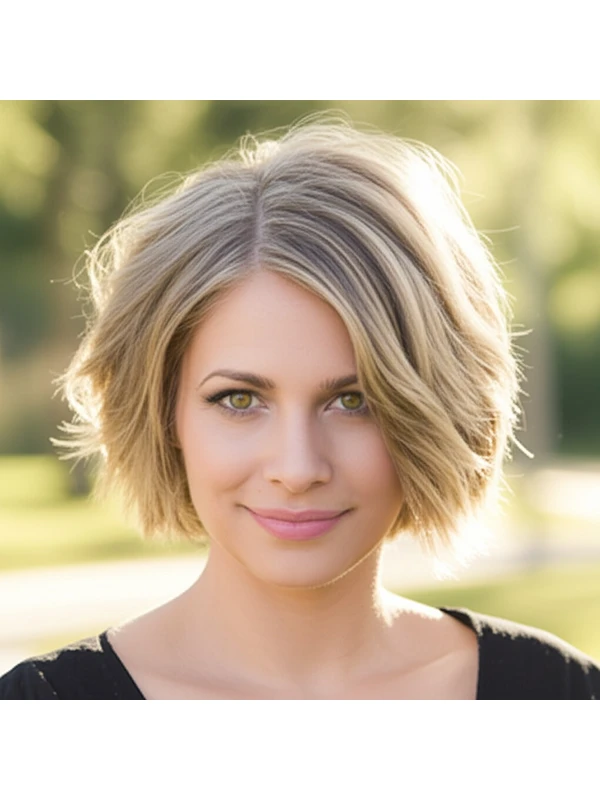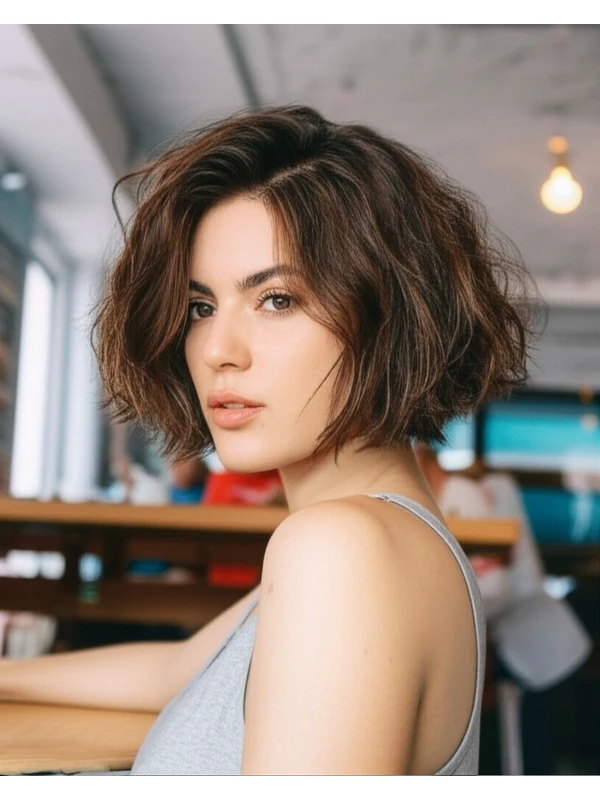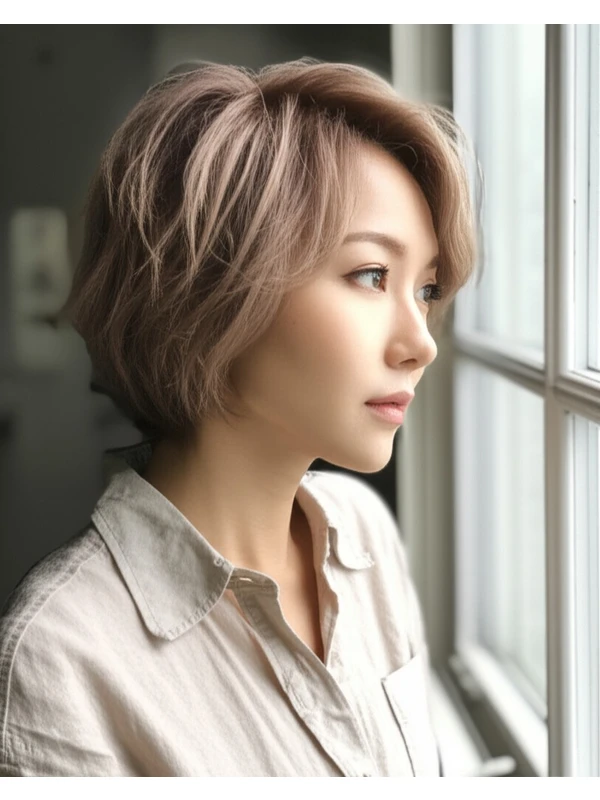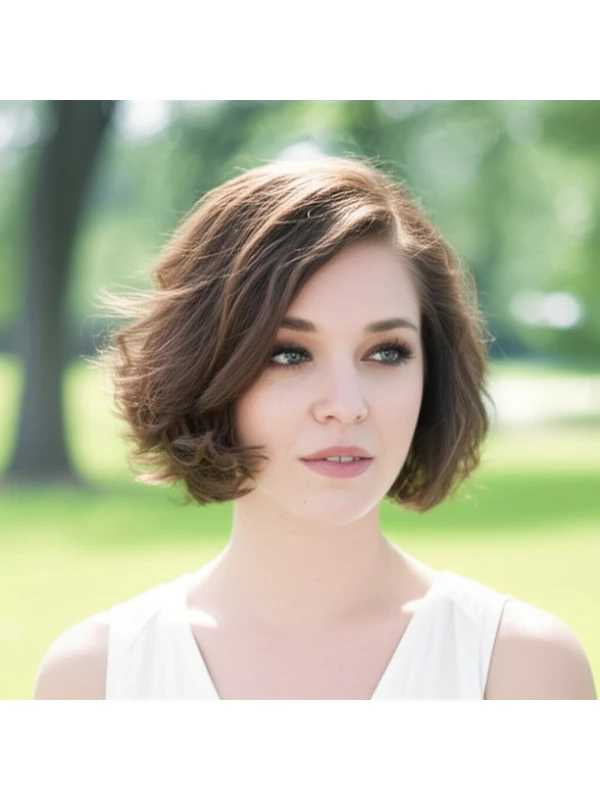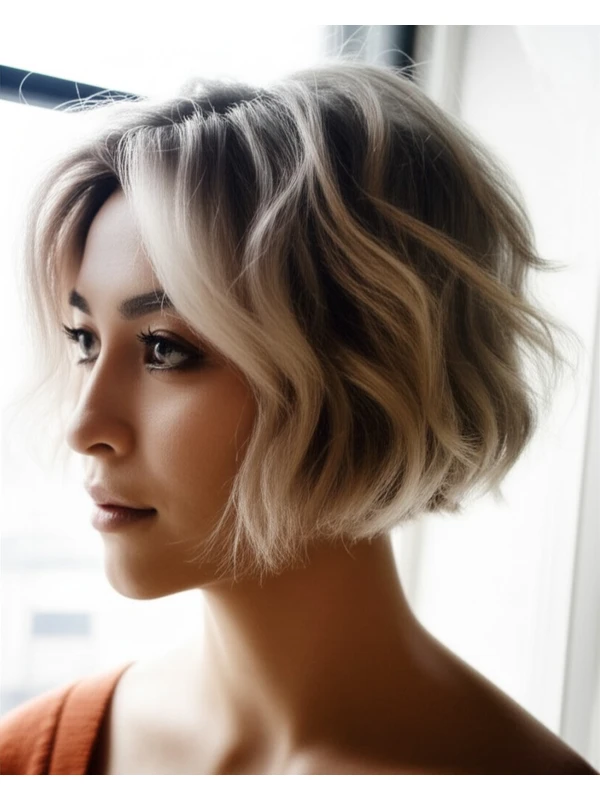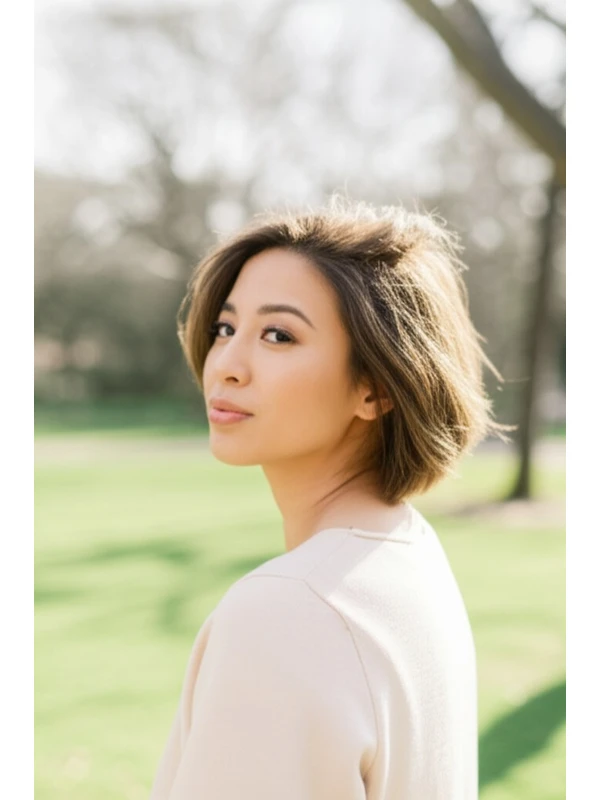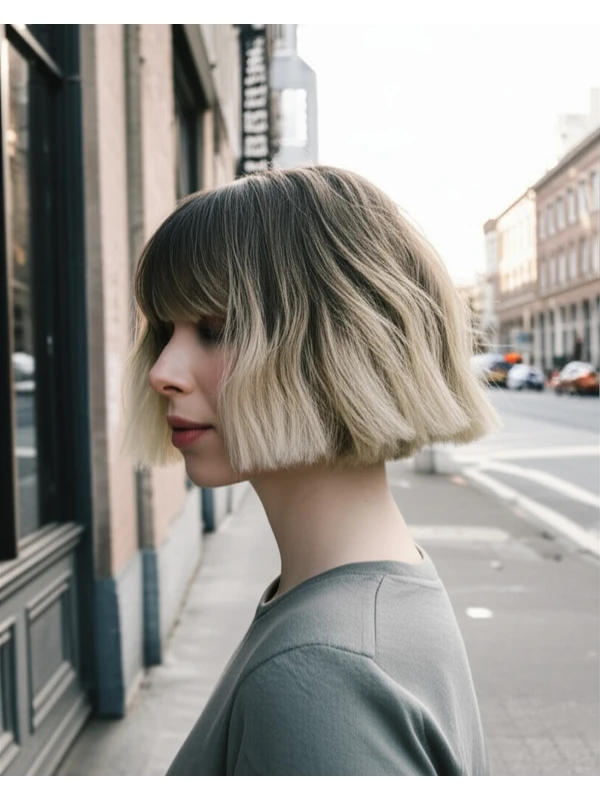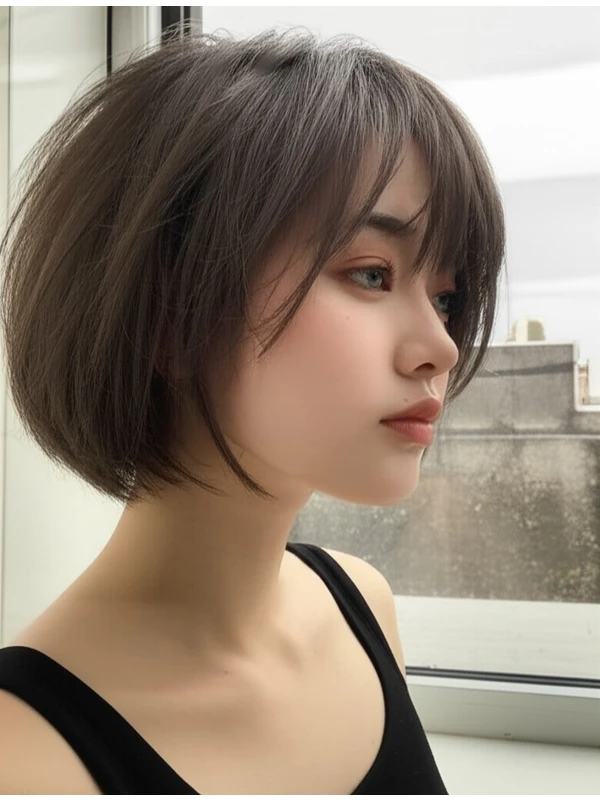#The Choppy Bob: A Modern Classic
The choppy bob is a hairstyle that’s been reinvented countless times, remaining consistently stylish across decades. It's more than just a short haircut; it’s an attitude! This guide will break down everything you need to know about the choppy bob – from whether it suits your face shape to how to style and maintain it.
#1) Background & Definition: What is a Choppy Bob?
The "choppy" element is key. Unlike a blunt or rounded bob, this cut features intentionally uneven layers. These layers create texture, movement, and visual interest. Think of it as a deliberate deconstruction of the classic bob shape.
- Cut Geometry: The choppy bob typically sits between chin length and just above the shoulders (lob – long bob). The back is shorter than the front, creating an angled silhouette.
- Key Features: Uneven layers, textured ends, often a slightly asymmetrical feel. It’s about controlled messiness rather than haphazardness.
- Length Ranges: Generally 6-14 inches (15-36 cm) from root to tip. Shorter choppy bobs are bolder; longer versions offer more versatility.
- Alternative Names: Textured bob, layered bob, deconstructed bob, shaggy bob.
#2) Face Shape Fit: Finding Your Perfect Choppy Bob
The choppy bob can work for many face shapes, but adjustments are needed to maximize its flattering effect.
- Oval Faces: Lucky you! Almost any length and level of choppiness will look great. A side part adds extra balance.
- Fringe Options: Wispy bangs or a curtain fringe soften the features.
- Round Faces: Choppy layers help elongate the face. Avoid bobs that are too short or round, as they can accentuate width. Height at the crown is your friend!
- Fringe Options: A long, angled fringe (curtain bangs) helps slim and lengthen. Avoid blunt, straight-across fringes.
- Square Faces: Soften strong jawlines with face-framing layers that start around the cheekbones. The choppiness breaks up harsh angles.
- Fringe Options: A soft, side-swept fringe or a textured curtain fringe works well to soften features.
- Heart Faces: Choppy bobs balance a wider forehead and pointed chin. Volume at the jawline adds fullness.
- Fringe Options: Side-swept bangs are generally flattering, avoiding anything too heavy that can overwhelm the face.
- Diamond Faces: The choppy bob highlights cheekbones and balances a narrower chin. Angled layers add dimension.
- Fringe Options: A wispy, textured fringe softens angles.
- Oblong (Long) Faces: Shorter choppy bobs with more volume at the sides create width and shorten the face visually. Avoid styles that are too long or straight.
- Fringe Options: A blunt or slightly piecey fringe can help reduce length perception.
#3) Body Proportions & Height Guidance: The Silhouette Effect
The choppy bob isn't just about your face; it impacts your overall silhouette.
- Petite Frames: Shorter, chin-length bobs create the illusion of height. Avoid overly long versions that can overwhelm a smaller frame.
- Average Heights: Most lengths work well – experiment with different layering heights!
- Tall Figures: A longer lob (below the shoulders) balances proportions. Adding volume at the sides helps prevent looking too elongated.
- Narrow Shoulders: Layers around the face and shoulders add visual width, balancing a slender frame.
- Broad Shoulders: Avoid excessive layering directly at the shoulder line, as it can visually widen them further. Focus on layers that start higher up on the head to draw attention upwards.
- Short Necks: A bob with more length in the back helps elongate the neck. Avoid very short bobs that accentuate a shorter neckline.
- Long Necks: A slightly longer choppy bob, or one with volume at the jawline, can help balance a long neck.
#4) Works Best With Hair Types & Densities: Texture Matters!
The choppy bob adapts beautifully to different hair types and densities, but adjustments are key.
- Straight Hair: The layers pop with definition; use texturizing products for added grit.
- Wavy Hair: Choppy layers enhance natural waves and create a more undone look. Air-drying is often ideal.
- Curly/Coily Hair: Choppiness can add shape and prevent the hair from looking triangular. Important: Account for shrinkage! What looks like 8 inches wet might be only 5 or 6 inches dry. Consult with a stylist experienced in cutting curly/coily textures. Layering needs to consider curl pattern and density.
- Fine Hair: Choppy layers create the illusion of volume, but avoid too many layers as this can make hair look even thinner.
- Medium Hair: The choppy bob is incredibly versatile for medium-density hair – embrace the texture!
- Thick Hair: Choppy layers remove bulk and add movement. Thinning shears might be used to further reduce density.
#5) Styling Variations: From Casual Cool to Evening Chic
The beauty of the choppy bob lies in its versatility.
- Sleek vs. Textured: Use a smoothing serum for a polished look or texturizing spray for added grit and definition.
- Middle vs. Side Part: A middle part offers symmetry, while a side part adds softness and asymmetry.
- Fringe Variations: Wispy bangs, curtain bangs, blunt fringes – all can be adapted to the choppy bob style.
- Occasion Styling:
- Casual: Air-dried with sea salt spray.
- Office: Sleeked down with a smoothing serum and a side part.
- Evening: Add subtle waves or curls using a curling iron or hot rollers.
#6) Maintenance: Keeping Your Choppy Bob Sharp
Regular trims are vital to maintain the shape of your choppy bob.
- Trim Cadence: Every 6-8 weeks, depending on hair growth and desired length/shape.
- At-Home Routine: Gentle shampoo & conditioner; leave-in conditioner for moisture (especially important for curly/coily hair).
- Heat vs Air-Dry: Minimize heat styling to preserve hair health. When using heat, always use a protectant spray.
- Product Checklist: Shampoo, Conditioner, Leave-In Conditioner, Texturizing Spray or Mousse, Finishing Serum or Oil.
- Estimated Daily Styling Time: 5-15 minutes (can be longer with curling/styling).
#7) Grow-Out Roadmap: Evolving the Look
The choppy bob changes as it grows out.
- Months 1-3: The shape is most defined and requires regular trims to maintain its structure.
- Months 3-6: Layers start to blend, creating a softer look. You can play with styling variations. Consider adding more layers if the style feels too heavy or loses definition.
- Maintaining Shape: Between cuts, focus on keeping ends healthy and preventing split ends.
#8) Color Pairings: Enhancing Dimension & Depth
Color elevates the choppy bob!
- Cool Undertones (Ash Blondes, Cool Browns): Enhance the edgy feel of the cut.
- Warm Undertones (Golden Blondes, Warm Reds, Copper Browns): Add warmth and vibrancy.
- Low-Commitment Options: Balayage or highlights add dimension without a drastic color change. Root smudging can soften harsh lines.
#9) Season & Occasion Guide: Adapting to the Mood
- Spring/Summer: Lighter, brighter colors; air-dried texture with sea salt spray.
- Fall/Winter: Richer tones (chocolate browns, deep reds); add warmth and shine with a serum.
- Work: Sleek and polished style – minimize frizz.
- Weddings/Parties: Soft waves or curls; consider adding hair accessories.
#10) Cost & Time: Salon Investment
- Salon Time: Typically 45-90 minutes, depending on complexity and stylist experience.
- Price Range: Generally falls within the mid-range of haircut prices – expect a slightly higher cost due to the layering involved. (e.g., may be more expensive than a simple trim but less costly than an intricate updo).
#11) Pros & Cons: Weighing Your Options
- Pros: Versatile, flattering on many face shapes, creates volume and texture, relatively low-maintenance (with regular trims).
- Cons: Requires regular trims to maintain shape, can look messy if not styled correctly, layering can thin out fine hair.
#12) Salon Consultation Script: Questions to Ask & Prepare
Here are some prompts for your salon consultation:
- "I'm interested in a choppy bob. Can you show me examples of different lengths and levels of choppiness?"
- "Based on my face shape, what length and layering would be most flattering?"
- "How can we incorporate bangs to balance my features?"
- “Can we discuss how the cut will work with my hair texture/density?”
- "What products do you recommend for styling this haircut at home?"
- "How often should I schedule trims to maintain the shape?"
#FAQs: Your Burning Questions Answered
- Is a choppy bob hard to style? Not necessarily! It can be styled in many ways, from air-dried texture to sleek sophistication.
- Can I get a choppy bob if my hair is damaged? Possibly, but discuss with your stylist first. They may recommend some conditioning treatments before cutting.
- What's the difference between a choppy bob and a shag? While similar, shags typically have more layers throughout the entire head and are often longer than a choppy bob.
- Can I do this at home? It’s best left to professionals for optimal results, especially with layering.
- How does shrinkage affect the length of a choppy bob on curly/coily hair? Account for 30-70% shrinkage depending on your curl pattern and density when discussing desired length with your stylist.
- Will a choppy bob make my face look wider? It can, if not styled correctly. Strategic layering and fringe placement are key to balancing the face shape.

